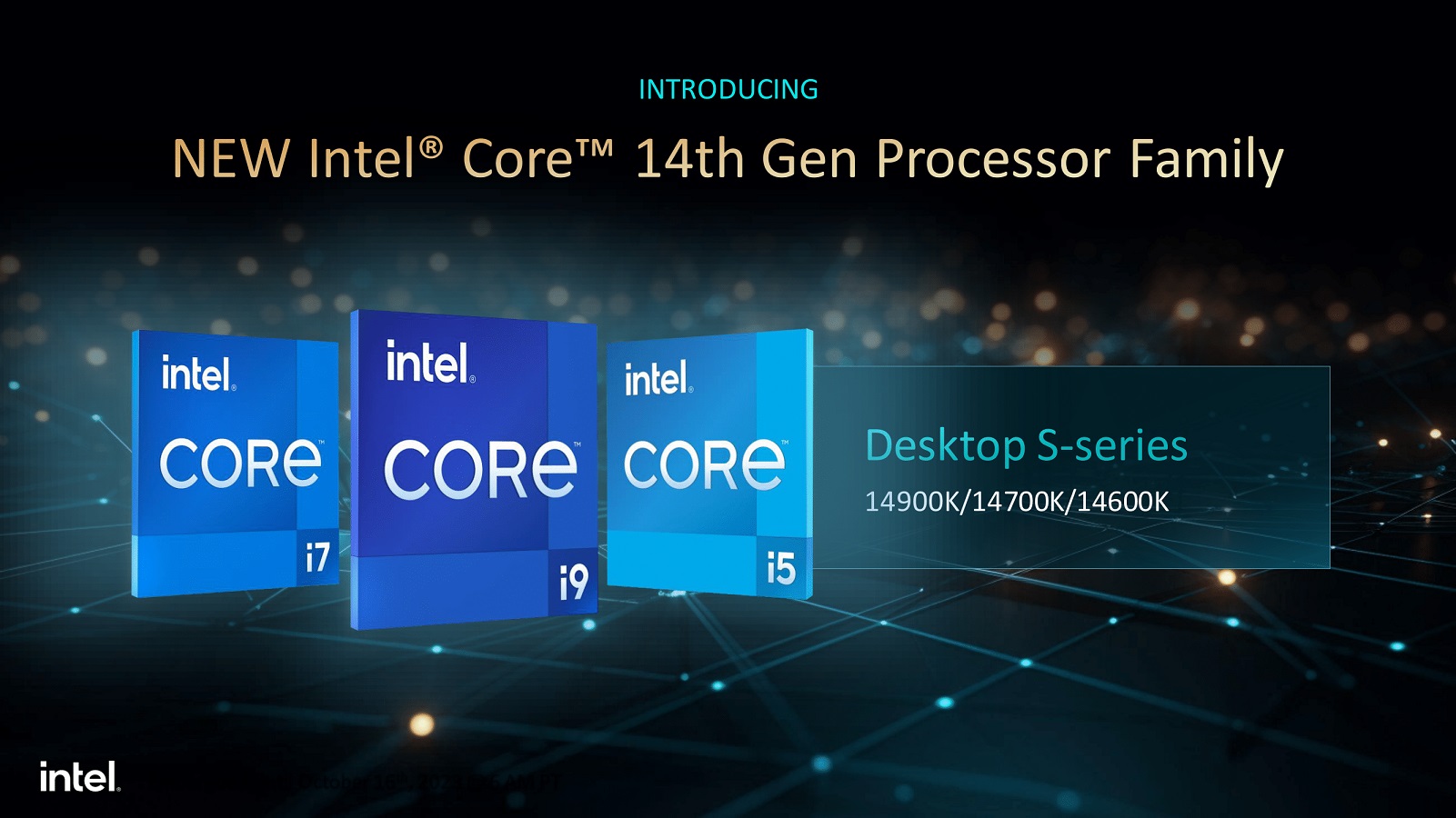Intel has officially unveiled the 14th Gen Core desktop processors, specifically the S-Series models, which are also known as the unlocked models with the “K” designation.
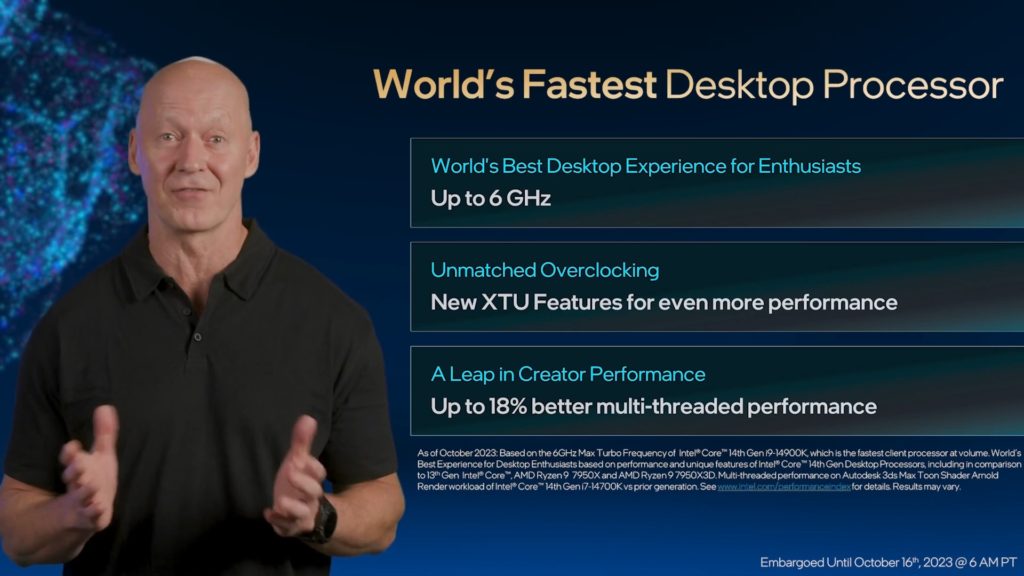
These 14th Gen processors kind of the “follow up from a good start” in regards to last year’s 13th Gen, as they maintain the same architecture and foundation while enhancing the feature set and raw processing capabilities. In essence, they offer a faster and more robust version of an already excellent product.
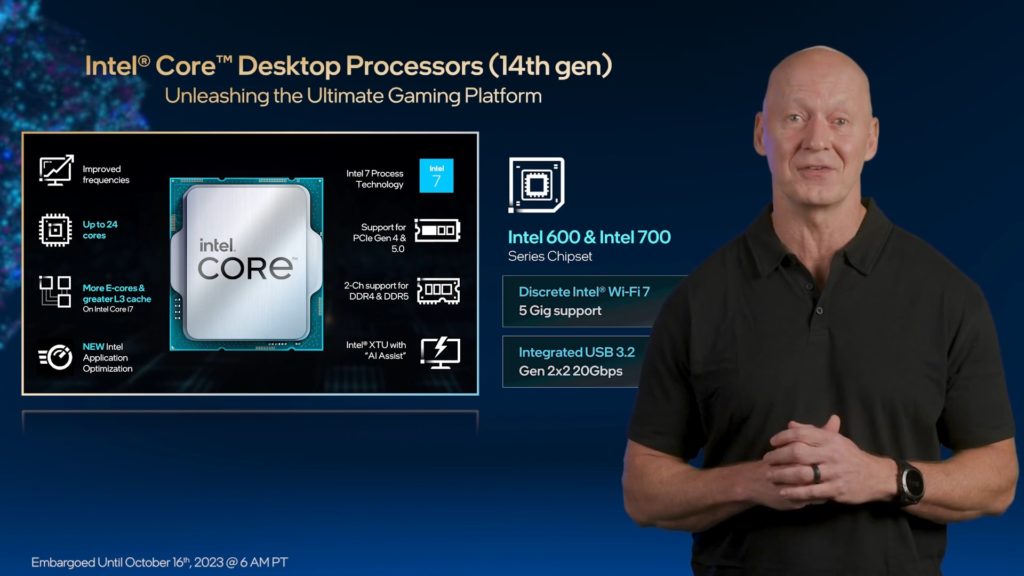 At the forefront is the i9-14900K, boasting 24 cores with an 8P+16E configuration and 32 threads, complemented by 32MB/36MB of L2 and L3 cache.
At the forefront is the i9-14900K, boasting 24 cores with an 8P+16E configuration and 32 threads, complemented by 32MB/36MB of L2 and L3 cache.
For the first time, the out-of-the-box boost clock can reach up to 6GHz, delivering exceptional single-core performance like never before. These processors can support up to 192GB of memory and maintain a maximum TDP of 253W (still toasty as ever eh).
The i7 range of products is going to bring more value to this generation as more E-cores and L3 caches are given to them.
In terms of PCIe-related features, Thunderbolt 4 is included from the outset, with Thunderbolt 5 slated for a later release.
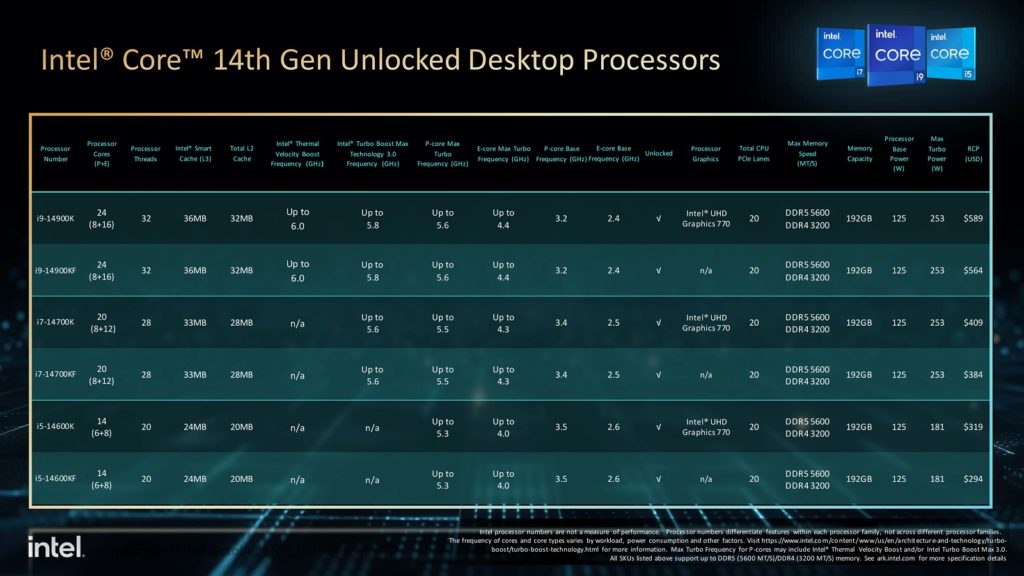 The initial product lineup consists of six entries, and the full list of options can be readily found online if you don’t mind the spoilers.
The initial product lineup consists of six entries, and the full list of options can be readily found online if you don’t mind the spoilers.
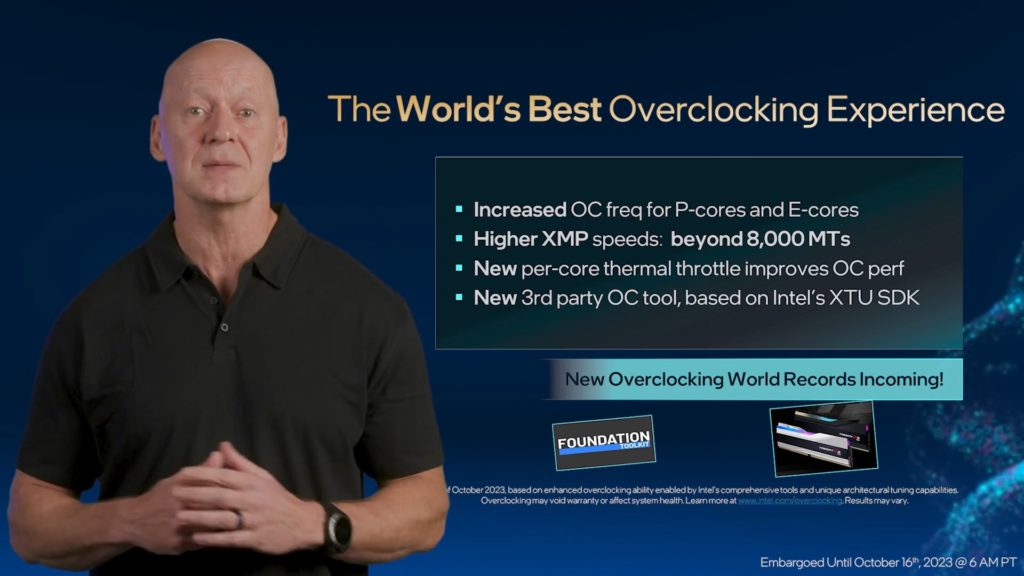 In addition to higher P-core and E-core frequencies, Intel has made it easier to achieve super high RAM speeds through their XMP one-click profiles, though the responsibility now falls on RAM manufacturers.
In addition to higher P-core and E-core frequencies, Intel has made it easier to achieve super high RAM speeds through their XMP one-click profiles, though the responsibility now falls on RAM manufacturers.
While the thermal throttle limit is technically higher, it could also mean that the cooling capacity of current-gen coolers running into slight trouble.
Furthermore, Intel has introduced a new 3rd-party OC tool based on the Intel XTU SDK, aiming to deliver improved overclocking results and a more user-friendly experience compared to the standard XTU software.
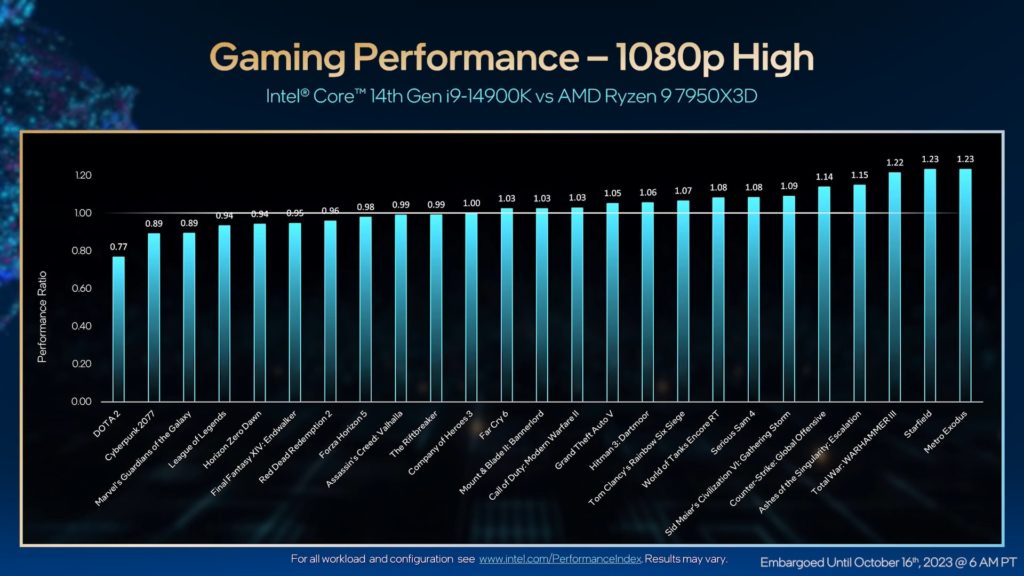 When comparing the i9-14900K to the AMD Ryzen 9 7950X3D, more than half of the tested titles yield superior results, with up to a 23% performance boost in games like Starfield and Metro Exodus. However, it appears that competitive MOBAs like DotA 2 and League of Legends still favor AMD.
When comparing the i9-14900K to the AMD Ryzen 9 7950X3D, more than half of the tested titles yield superior results, with up to a 23% performance boost in games like Starfield and Metro Exodus. However, it appears that competitive MOBAs like DotA 2 and League of Legends still favor AMD.
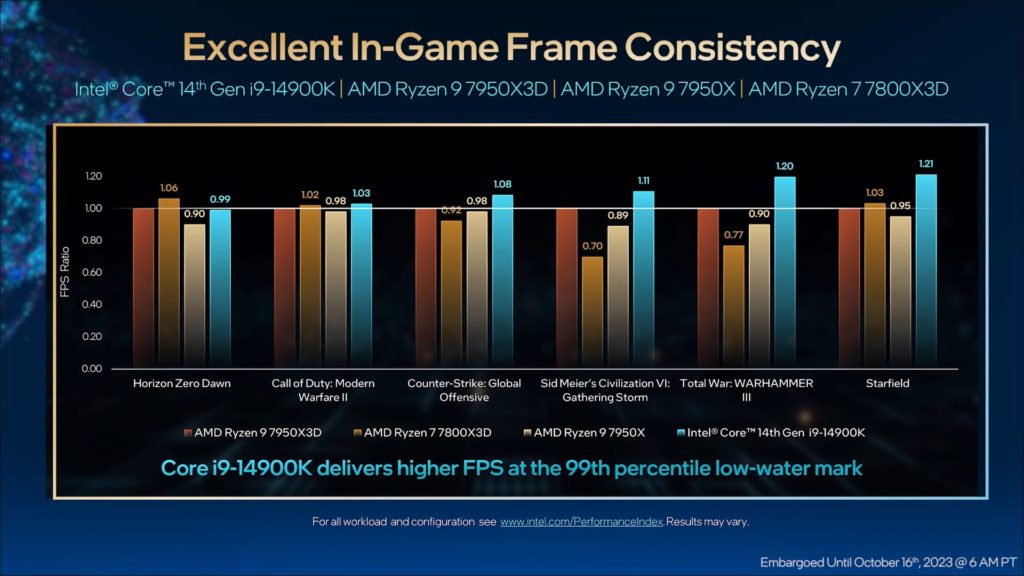 In terms of frame consistency, Intel outperforms AMD in 5 out of 6 scenarios, resulting in smoother transitions and reduced jitter during gameplay.
In terms of frame consistency, Intel outperforms AMD in 5 out of 6 scenarios, resulting in smoother transitions and reduced jitter during gameplay.
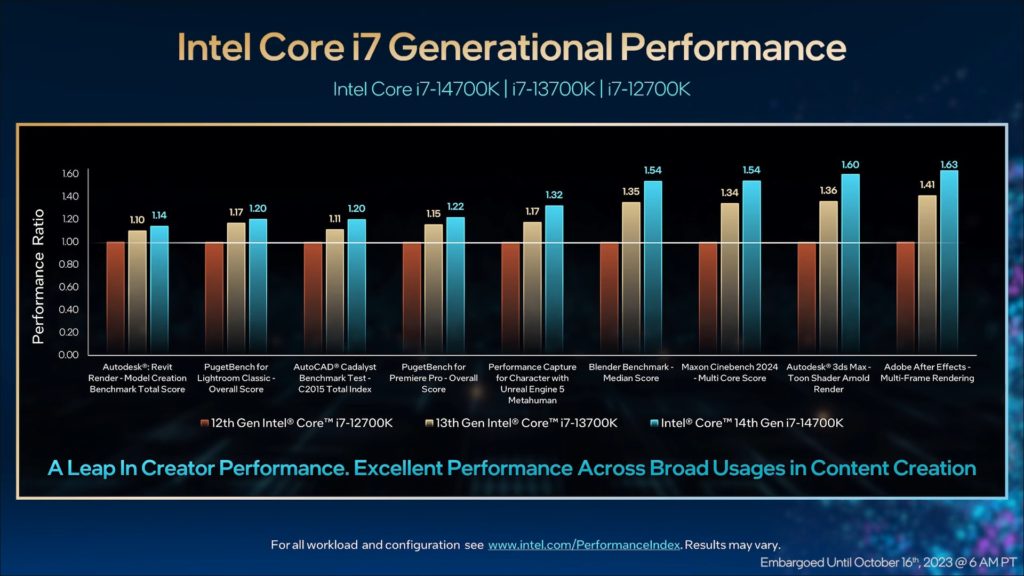 For those who consider “i7 is sufficient” for their builds, the performance leap is quite noticeable, especially when used for productivity applications.
For those who consider “i7 is sufficient” for their builds, the performance leap is quite noticeable, especially when used for productivity applications.
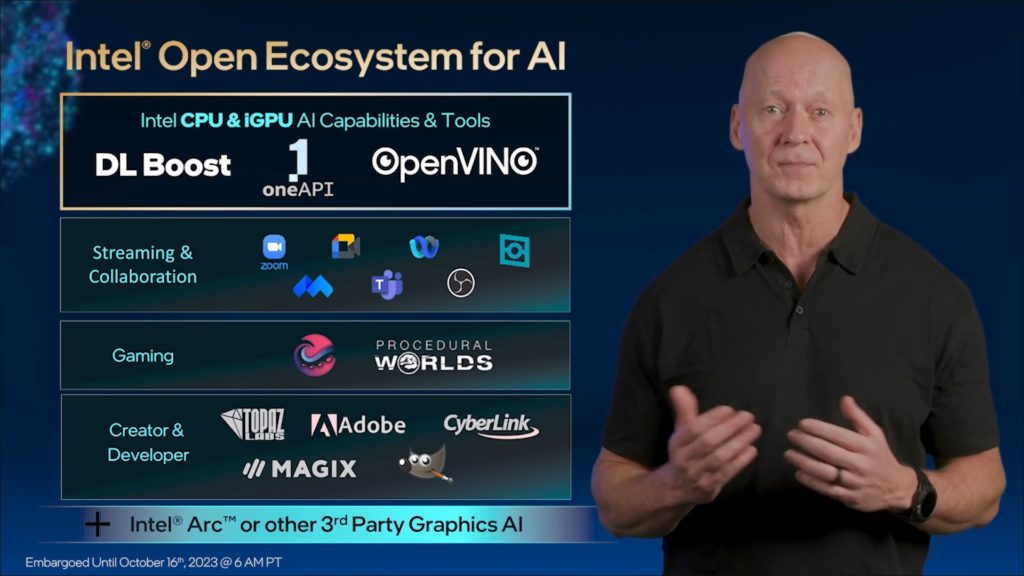 Lastly, these CPUs support AI accelerations across various tools and platforms, including Intel’s OpenVINO toolkit, as well as streaming, collaboration, creative, and developer applications in the industry.
Lastly, these CPUs support AI accelerations across various tools and platforms, including Intel’s OpenVINO toolkit, as well as streaming, collaboration, creative, and developer applications in the industry.


